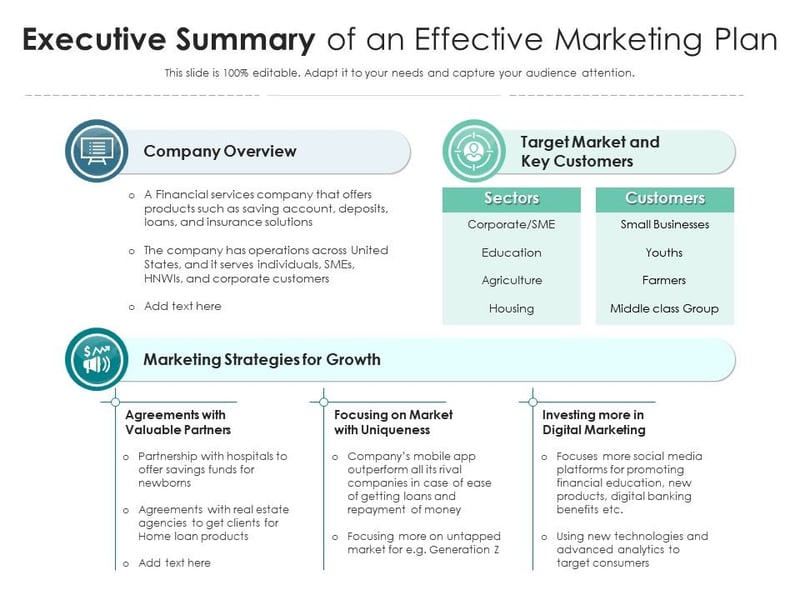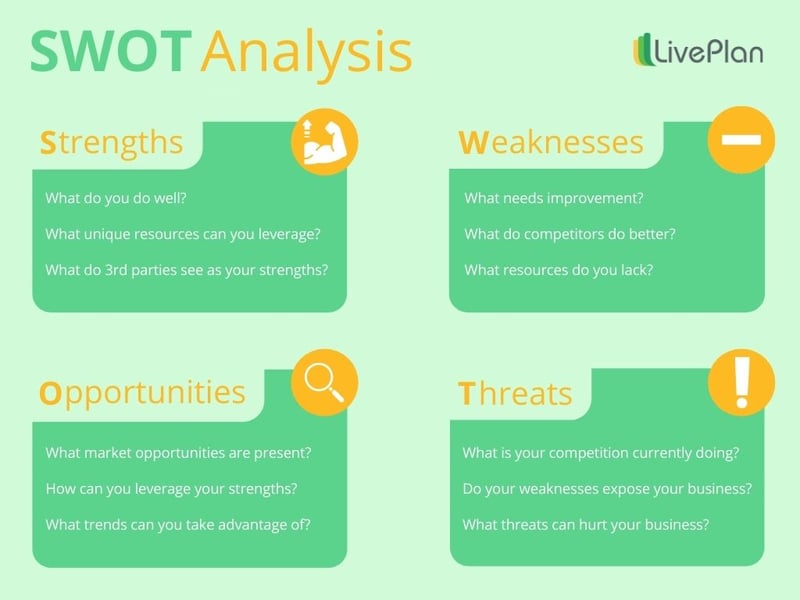
7 Steps To Creating A Killer Sales Plan
 Updated on
Updated on
 By Carlos Correa
By Carlos Correa
Carlos Correa
Carlos has been involved in the sales space for well over ten years. He began in the insurance space as an individual sales agent, managing teams as s...
learn more
Carlos Correa
Carlos has been involved in the sales space for well over ten years. He began in the insurance space as an individual sales agent, managing teams as s...
Table of Contents
Table of Contents
It's the start of a new quarter, and you've just arrived at work to a full inbox.
You slurp down your triple-shot coffee, and try to establish what's urgent and needs tending to now, what can be sorted out later, and what can go straight in the trash.
There's an email there from your boss with the subject line "Sales quota Q2".
You open that email, and things don't look good.
The expectation on your team is much higher than you'd expected, and for sure higher than your team is currently capable of producing.
You need a plan.
More specifically, you need a sales plan.
Creating a powerful sales plan is no small feat, that's for sure, but that's why we're here! In this guide, we'll show you exactly what goes in a sales plan and guide you through the 11 steps to creating a killer plan for sales success.
What Is a Sales Plan?
A sales plan essentially details how you're going to go about achieving the targets required for your business to be successful.
It lays out the objectives and goals you want to achieve, discusses high-level strategies and tactics for achieving them, and details aspects such as team capabilities and resources, and actions that need to be taken to extend these capabilities.
An effective sales plan achieves a number of objectives:
- Provides you with a framework for managing your sales team
- Allows you to communicate goals and tactics effectively to your sales rep
- Gives your team a roadmap to follow for sales success
- Serves as a guiding star to which you can refer and track progress
- Assures the leadership team of your ability to deliver on the targets they've set for you
Why Create a Sales Plan?
You can think of sales planning as similar to creating a traditional business plan, except with reference specific to sales development.
It's pretty well-known that the majority of new businesses fail (around 90%), and a leading cause for this incredibly high number is the fact that many founders fail to craft an effective business plan.
It's why 69% of business investors won't fund a startup without first having seen a thorough business plan.
The same applies to the success of your sales team.
If you don't have a plan of attack, then you're plain and simple far less likely to achieve your goals.
Without a documented sales plan, several problems arise:
- You don't have an understanding of the resources required to propel your team to success
- Your reps underperform, underearn, and move on to new job opportunities
- You're unable to rally the team toward a common goal, as you don't have a clear vision for how to get there
- You don't have anything to measure against
- Leadership may lose faith in your ability to reach targets
- You won't know where to turn if and when things don't go well
Creating an effective plan means you're better able to perform accurate sales analysis, you can motivate and inspire your team (and can gain buy-in from the troops), and you can design strategies for enhancing individual performance.
So what does a sales plan actually look like in practice?
What Goes In a Sales Plan?

A well-designed sales plan has 10 sections:
- Executive summary
- Goals and revenue targets
- Review of prior performance
- Market conditions
- Target customers
- Strategies and tactics
- Team capabilities and structure
- Current resources
- Action plan for teams and individuals
- Benchmarks and KPIs
Let's look at each in a little more detail.
1. Executive summary
The executive summary provides a brief description and overview of the entire sales plan.
It should include one to two lines from each of the following sections, meaning the entire executive summary should be less than one page in length.
To maximize the space you have available, consider using bullet points and other design elements.
This is an example of an executive summary from a marketing plan, but a sales plan summary would look fairly similar.

2. Goals and revenue targets
The next section should detail any company objectives you have, as well as the annual and quarterly (or even monthly) revenue targets you have.
Depending on the size and structure of your company, this may be a few bullet points or it may be a comprehensive section that details goals across different teams, for different products or customer segments, as well as information such as revenue, gross profit, and net profit targets.
3. Review of prior performance
Creating a plan for success involves having a solid understanding of how your organization has performed in the past.
This means performing a thorough historical sales analysis.
It's impossible to determine how you'll reach a goal of, say, $2m in revenue if you have no data on how much revenue you generated last month.
The aspects of the performance you review in this section should relate directly to your goals and targets set out in the previous section.
For example, if you have a revenue goal that looks like this:
- Q1 2022 = $1.5m
- Q2 2022 = $2.5m
- Q3 2022 = $3.5m
- Q4 2022 = $2.5m
Then your review of previous revenue performance should show what you achieved in the same timeframe last year:
- Q1 2021 = $0.9m
- Q2 2021 = $1.7m
- Q3 2021 = $2.1m
- Q4 2021 = $1.5m
4. Market conditions
Your team is not selling into a vacuum.
The customers you're targeting exist within the wider context of the economy, and in the more specific context of the industry and market you occupy.
This section should provide readers with an understanding of how the market is operating right now, and any positive or negative indications.
Cover aspects such as:
- Consumer sentiment
- Market segment growth
- Your market share
- Economic growth/decline
- Inflation/deflation
- New market entrants
- Competitive landscape
5. Target customers
Here you'll provide a description of the ideal customer your team is looking to target.
You may have one or several customer personas.
If you're targeting different customers for different products, or you have a few different types of buyers (for example some products may be applicable to marketing managers and small business owners alike), then you'll need to include a section for each target customer.

Include these five categories for each persona:
- Demographics
- Goals and desires
- Current challenges
- The main benefit they get from your service/product
- Objections and concerns
6. Strategies and tactics
With consideration to the goals and targets you have set, what strategies and tactics are you going to use to get there?
For example, is your team going to take an outbound sales approach, or rely on inbound marketing to drive lead generation?
Will your team be mostly inside sales reps, dialing out on VoIP phones? Or are you going to hire outside sales reps to visit potential customers?
This section of the sales plan can reference sales process documentation, should you have this prepared already.
7. Team capabilities and structure
Here, you'll describe what your team looks like.
It should include roles, costs, and quotas:
|
Rep |
Role |
Salary (incl. commission) |
Monthly quota |
|
Rep 1 |
Sales Development Rep |
$70,000 |
$15,000 |
|
Rep 2 |
Account Executive |
$90,000 |
$50,000 |
|
Rep 3 |
Sales Development Rep |
$70,000 |
$15,000 |
|
Rep 4 |
Sales Development Rep |
$70,000 |
$15,000 |
|
Rep 4 |
Senior Account Executive |
$115,000 |
$75,000 |
You should also include a few paragraphs that describe the capabilities of your team, and shortcomings.
For example, you may have identified that your team is great at prospecting and demonstrations, but struggles to close.
Including this information will help you to build a team and individual development plans to enhance performance and achieve your targets.
8. Current resources
What resources do you have at your disposal right now?
This should include aspects such as:
- Sales CRM
- Prospecting and sales intelligence tools
- Power dialers
- Physical resources such as laptops and phones
- Sales reporting tools
- Learning management systems
- Sales automation
- Rep performance monitoring and sales insights
You should also include mention of resources you don't have, and that would be helpful in moving you toward the aforementioned objectives.
9. Action plan for teams and individuals

Use your breakdown of team capabilities to design action plans for each of your sales reps.
The action plan should detail:
- The skill requiring development
- The goal (what success looks like)
- The current situation
- Steps to take to improve team ability
- How and when you're going to measure improvement
10. Benchmarks and KPIs
Lastly, your sales plan should discuss the key performance indicators that show that your team is (or isn't) heading toward the core goals you've set out at the start.
For example, let's say you know that one of every five product demonstrations leads to a sale and that your SDRs need to talk to six leads for every demo they manage to book.
You also know that 40% of your calls actually get answered.
So, in order to gain one new customer each week, you need to set a KPI for SDRs to call 75 new leads each week (75 calls at a 40% answer rate means 30 conversations, 5 of which book meetings, and one of those will turn into a sale).
7 Steps To Creating A Killer Sales Plan
1. Conduct a SWOT Analysis
A SWOT sales analysis looks at the strengths, weaknesses, opportunities, and threats to your sales team and organization as a whole.

The idea here is to use the strengths and opportunities you identify to determine the best strategies and tactics to employ as part of your sales plan.
You'll also use weaknesses and threats identified during the SWOT sales analysis process to create individual development plans and to create strategies to improve your resources either through hiring new reps or by implementing specific software solutions.
2. Define Clear Sales Goals
Next, you need to clearly define your organizational goals.
There are a number of goals your company might look to work towards, for example:
|
Metric |
Example |
|
Revenue |
Increase sales revenue by $1m |
|
Average deal size |
Increase average deal size by $500 |
|
Average deal length |
Reduce average length of sales by 2 days |
|
Win rate |
Increase win rate by 5% |
|
Customer acquisition cost |
Reduce CAQ by 10% |
|
Rep activities |
Increase daily calls to 120 and emails to 150 per day |
|
Email response rate |
Improve cold email response rate by 20% |
Setting clear goals helps you to determine the key metrics you'll track and allows you to assess the importance of various sales tactics.
3. Understand Your Target Market
Your sales plan should be tailored to your target market. Who are you trying to sell to? What are their needs, wants, and pain points? By understanding your target market, you can create a sales message that resonates with them.
This involves conducting market research to gather data on your target audience's demographics, psychographics, and buying behavior.
Answer these questions in your market analysis:
- Is the economy, in general, growing or shrinking?
- Is your market sector experiencing growth?
- How many competitors exist in your industry? Who are they?
- What percentage of market share do you own?
- What is consumer sentiment like right now?
- How are customers in your industry spending money?
You should also provide an analysis of target customer segments and any changes or specific insights that are relevant to your success in the following year.
4. Develop Sales Strategies and Tactics
Now that you know where you're going and who you're selling to, it's time to map out how you're going to get there. Develop sales strategies that outline your overall approach, and then create sales tactics that detail the specific actions you'll take to achieve your goals.
Consider factors like your sales channels, sales processes, and sales messaging. For example, you might decide to focus on inbound marketing to attract leads and then use a consultative sales approach to close deals.
5. Allocate Budget and Resources
Even the best sales plans can crumble without proper budget allocation. Identify the resources you'll need—this could be hiring more sales reps, investing in marketing, or upgrading your CRM. You don't want to run out of budget halfway through implementing your sales plan.
Start by looking at your sales analysis from previous years to understand where to allocate funds. And don't forget to allocate resources for unexpected shifts in the market; flexibility is key in sales planning.
6. Set Up Sales Processes and Tools
You can't have a killer sales plan without the right processes and tools in place. Streamline your workflow by defining your sales process—from lead generation to closing the deal. Make sure your sales team knows exactly what to do at each step. Tools like CRMs play a pivotal role here.
Take Ringy, for example, our CRM. It comes packed with the following features to enhance your sales processes:
- Lead Management: Automatically track, organize, and prioritize leads, ensuring your sales team focuses on the most promising prospects.
- Automated Follow-Ups: Set up personalized, automated text and email follow-ups, so no lead slips through the cracks.
- Sales Performance Tracking: Monitor key metrics like lead response times, conversion rates, and overall sales performance in real-time.
- Integrated Communication Tools: Manage all customer interactions from one platform, including calls, emails, and texts, to ensure a seamless customer experience.
- Detailed Reporting and Analytics: Generate detailed reports that provide insights into your sales pipeline, team performance, and customer engagement.
- CRM Automation: Automate repetitive tasks like data entry and reminders, freeing up more time for your team to focus on closing deals.
7. Establish Performance Metrics and Review
Finally, you need to know if your plan is actually working. Establish clear performance metrics to track success. These might include conversion rates, average deal size, or the number of leads generated. Regularly review these metrics and adjust your strategy as needed.
You can't improve what you don't measure! Consider setting up monthly or quarterly reviews to ensure your team stays on track and your sales plan remains relevant in an ever-changing market.
Common Challenges in Sales Planning
No sales plan is without its hiccups. Even the best-laid plans can face unexpected roadblocks, from market shifts to budget cuts. But the key to success isn't avoiding challenges—it's being prepared to face them head-on.
Let's break down some common challenges in sales planning and explore strategies to overcome them.
Identifying Potential Obstacles
Sales planning is all about being proactive, but that's easier said than done. Here are a few obstacles that can catch even seasoned sales teams off guard:
- Market Shifts: Whether it's a sudden change in consumer behavior, new competition, or economic downturns, market shifts can throw a wrench in your sales goals.
- Resource Constraints: Limited budgets or staff can hamper your ability to execute your sales strategies. You may want to launch a full-scale marketing campaign, but without the funds or personnel, it becomes difficult to achieve your goals.
- Inefficient Sales Processes: An over-complicated or outdated sales process can create bottlenecks that slow your team down. Without the right sales tools or a clear structure, teams waste valuable time on repetitive tasks or chasing down leads that could be managed more efficiently.
- Unrealistic Sales Goals: Setting overly ambitious sales targets can demotivate your team and lead to burnout. It's important to base your goals on actual sales analysis and data, not gut feelings.
- Changing Customer Needs: Your target market may evolve faster than you can keep up. If your product no longer meets customer expectations, your sales strategies will falter.
Strategies for Overcoming These Challenges
While these challenges are real, they're not insurmountable. The best sales plans are adaptable, with built-in flexibility to address unexpected obstacles. Here's how you can stay ahead:
- Agile Sales Planning: Agile planning means regularly reviewing and adjusting your plan based on real-time sales data analytics. Agile planning also means being ready to revise your sales goals if external conditions change.
- Scenario Analysis: This involves creating multiple "what-if" scenarios that help you prepare for various market shifts. For example, what happens if there's a 10% drop in customer demand next quarter? What if a new competitor undercuts your prices? By anticipating these possibilities, you can adjust your budget, sales strategies, and resource allocation accordingly.
- Resource Optimization: Dealing with limited resources is all about smart allocation. Start by identifying where your efforts will yield the highest return. For instance, using a CRM like Ringy helps optimize time and resources by automating repetitive tasks, enabling your team to focus on high-impact activities like closing deals. If budget cuts are inevitable, ensure you're cutting from the areas with the least direct impact on revenue generation.
- Data-Driven Decision-Making: Rely on sales insights and data analytics to guide your decisions. If you notice a drop in lead quality or deal size, use sales data to pinpoint the root cause. Maybe it's time to adjust your target market or reevaluate your sales tactics.
- Continual Training and Support: Keep your sales team equipped to handle shifting customer needs and new challenges. Regular training sessions on new tools, sales tactics, and customer behaviors can keep your team sharp and adaptive.
Best Practices for Implementing a Sales Plan
A well-crafted sales plan is only as effective as its implementation. To truly see results, you need to put the plan into action in a way that ensures alignment, adaptability, and consistent improvement. Here are some best practices for making your sales plan work seamlessly:
1. Regular Communication and Alignment with the Sales Team
You can't just hand over a sales plan and expect magic to happen. Regular communication is key to ensuring everyone is on the same page. Hold weekly or bi-weekly meetings to discuss progress, challenges, and any needed adjustments.
Make sure the sales team is fully aligned with the company's overall goals. There's nothing worse than one team pushing for aggressive sales while another team is working on customer retention without coordination.
Encourage open feedback from the sales team on what's working and what's not. They're on the front lines, so their insights are crucial for refining the plan.
- Fun fact: When marketing and sales teams are aligned, companies are 67% more efficient at closing deals.
2. Continuous Training and Development for Sales Personnel
Sales strategies evolve, and so should your sales team. Continuous training ensures that your team stays up to date on the latest tactics, tools, and industry trends. This could be anything from improving negotiation skills to mastering new sales software.
Focus on both product knowledge and sales techniques. A well-informed salesperson is a confident salesperson. Don't just rely on formal training. Implement on-the-job coaching, peer-to-peer mentoring, and role-playing exercises to reinforce learning.
3. Monitoring and Adjusting the Plan Based on Market Feedback and Performance Data
A sales plan should never be set in stone. It's a living document that needs to be adjusted based on real-world performance and market shifts. Use sales data analytics to track progress and spot trends early on. If certain tactics aren't driving the desired results, don't hesitate to pivot.
Collect feedback directly from your target market. If customers are saying that a competitor's product meets their needs better, it's time to reevaluate your approach.
Keep an eye on KPIs like conversion rates, average deal size, and sales cycle length. These metrics will tell you where your team is thriving and where there's room for improvement. With this data in hand, you can make more informed adjustments to your strategy.
- Pro tip: Companies that use data-driven decision-making are 5-6% more productive and profitable than their peers.
4. Leveraging Technology and Data Analytics for Better Decision-Making
As mentioned, a CRM system like Ringy not only streamlines communication and lead management but also provides valuable sales insights to help guide your decisions. Automating tasks like follow-ups or customer segmentation saves your team time while improving efficiency.
Use advanced sales data analytics to track every aspect of your sales process—from lead generation to closing deals. This allows you to identify bottlenecks, improve processes, and capitalize on what's working well.
Consider integrating sales enablement tools that provide insights into buyer behaviors and personalize your outreach accordingly. The more you know about your prospects, the better your chances of closing deals.
- Fun stat: Companies that implement sales automation see a 10-15% boost in efficiency, so why not let technology lighten the load?
How to Measure Your Sales Plan's Effectiveness

A sales plan in and of itself is all well and good, but how do you know if it's actually making an impact?
This is where your metrics and reporting come in.
In an ideal world (scratch that, in a necessary world), you've got a capable sales CRM set up with a robust suite of reporting and analytics tools.
This should allow you to look in regularly and understand:
- Individual rep performance
- Team performance
- Drop off rates at each pipeline stage (to identify leaks)
- Average deal sizes
- What sales activities are proving most effective
- Progress toward goals
It's important, then, that you set up some quality KPIs, and establish a regular cadence for reporting.
The best way to do this, and to keep your reps properly motivated, is to get down to the level of behavior.
That means that rather than measuring the effectiveness of your sales plan based on, say, your deal win rate (which you should be tracking too, by the way), you should understand the activities and behaviours your reps exhibit that lead to winning deals.
This might include things like:
- Number of calls per day
- Specific word tracks used during phone calls
- Accurate prospecting and identification of key decision-makers
- Time and day they're calling
If you're able to accurately identify the micro behaviors that lead to success and drive your metrics forward, then incentivizing and measuring those behaviors is your best lever for success.
Then, set up a cadence of sales reporting and stick to it. A good idea is to have a split weekly/monthly cadence.
Provide weekly updates to your team every Monday, and meet with individual reps each week to discuss progress (or lack thereof, and what can be done to put them back on course).
Then, send out a more thorough analysis of sales performance on a monthly basis, and hold a full-time meeting to review and discuss.
How to React When Your Sales Plan Doesn't Work
One of the challenges sales leaders face is that their plans don't always work out as expected.
And when this happens, it can be difficult to determine whether you simply haven't given enough time for your plan to work, or whether you've made a mistake in the planning process.
Use this process to troubleshoot:
- Are the factors you've identified in the sales plan (such as market conditions) still correct? If not, there may be an external reason for your sales plan not working out.
- Have you and your team been following the plan accurately? If not, all that might be required is a recommitment to the original plan.
- Are you making progress toward your goals? If so, it might be that you need to double down on the areas that are working and throw out the ones that aren't.
If none of this appears to be the reason, then you may need to go back to the drawing board.
Don't fall victim to the sunk costs fallacy. If you get a quarter in, and you've not made any progress, consider recreating the plan altogether; you might have taken a wrong approach somewhere.
Conclusion

If you've been watching carefully, you'll have noticed that there's one helpful tool that's going to be crucial for sales planning success:
The CRM.
You're going to need a powerful, affordable CRM to access sales insights during the planning process, to manage sales throughout the year, and to perform sales analysis and reporting to check you're still on track.
Guess what? That's us!
Book a demo with one of the Ringy team today, and find out how we can propel you and your team to sales success.

Skyrocket your sales with the CRM that does it all.
Calling? Check. SMS? Check. Automation and AI? Check. Effortlessly keep in touch with your customers and boost your revenue without limits.

Take your sales to new heights with Ringy.
Sales in a slump? Ringy gives you the tools and flexibility you need to capture leads, engage with them, and turn them into customers.
Subscribe to Our Blog
Enter your email to get the latest updates sent straight to your inbox!
Categories
Related Articles



































































































